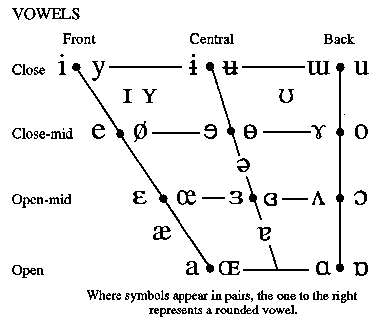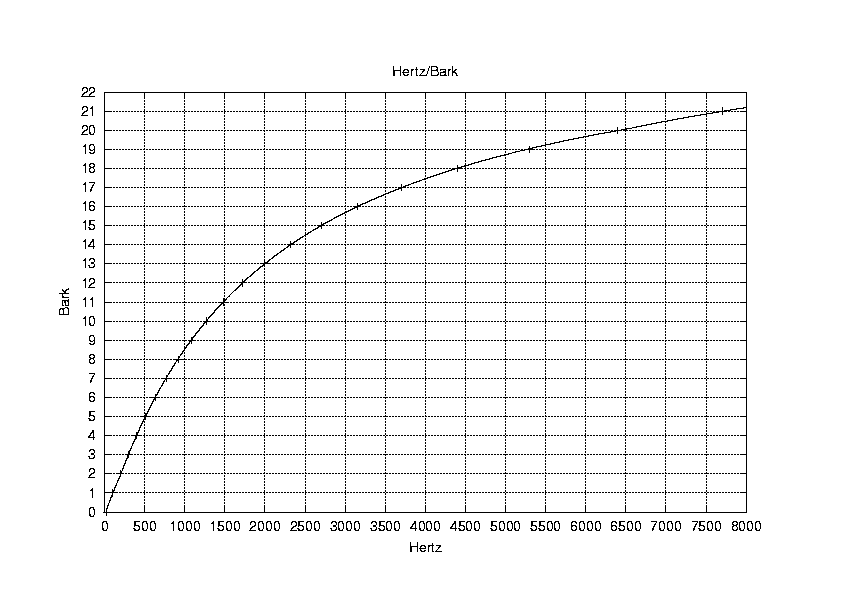
Sonification seminar - 10/9/03
Moving up in dimensional space, or,
the world beyond pitch?
Topics:
An Introduction to timbre models
MDS (Grey, 1977)
cardinal vowels
extreme positions: (close) High/Front (open) Low/Back
general
timbre analysis based on cardinal vowel space
| IPA symbol | Example |
|---|---|
| i | beet, steal, eat, bee, chief |
| in, it, busy, limb, nearly(?) | |
| eI | able, bake, say |
| edge, elm, them, neck | |
| at, ask, ham, sang | |
| olive, onset, Tom, bomb | |
| upper, uncle, but, rough | |
| almost, ought, taut, caught, law, gnaw | |
| oU | oak, oval, boat, rose, no, sew |
| cook, stood, should, wolf | |
| u | ooze, oops, doom, whom, too, flu |
| First vowel of again, across Second vowel of lemon, nation, sofa |
|
| aI | ice, eyes, find, shine, by, sigh |
| aU | out, hour, fowl, doubt, how, thou |
| oil, oyster, coin, appoint, coy, boy | |
| ju | you, useful, pewter, jute, few, queue |
| earn, urge, turn, heard, fur, purr |
Critical Band
The range of frequencies that activate a single area of the basilar
membrane. Measured perceptually by the smallest difference in which two
sine tones are heard as distinct or as a single sine tone is masked by
noise.
In human hearing, only those frequency components within a narrow band, called the critical band, will mask a given tone. Critical bandwidth varies with frequency but is usually between 1/6 and 1/3 octave.
Bark Scale
The human auditory system consists of a series of bandpass filters
(filters that have a certain center frequency and that increasingly
attenuate signals as they deviate from that cf). The bandwidth of these
auditory filters increases with higher frequencies and the precision of
the frequency perception decreases.
Taking into account this property of the human auditory system, the
Bark scale is a perceptually realistic scale of frequency.
The following conversion should be applied to transform frequency
values (F) into Bark values:
Bark= [ (26.81*F) / (1960+F) ] - 0.53 where F= freq in Hz
(Traunmuller 1990)
other Bark Scale approximations include:
Zwicker & Terhardt
(1980)(1) Bark = 13tan-1(0.76f/1000)
+ 3.5tan-1(f/7500)2
(2) Bark = 8.7 + 14.2log10(f/1000)
Terhardt
(1979)(3) Bark = 13.3tan-1(0.75f/1000)
(4) Bark = 12.82tan-1(0.78f/1000)
+ 0.17(f/1000)1.4
Wang, Sekey & Gersho
(1992)(5) Bark = 6sinh-1(f/600)
Schroeder
(1977)(6) Bark = 7sinh-1(f/650)
Traunmüller
(1990)(7) Bark = 26.81/(1+(1960/f)) -
0.53
Frequencies and their bark equivalents, according to Traunmüller's approximation. The crosses on the plot correspond to the standard rounded bark scale.

(from Paul Carter)